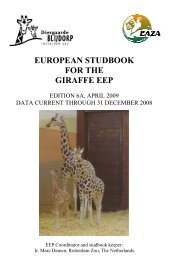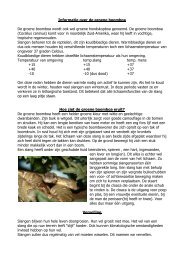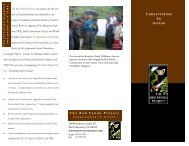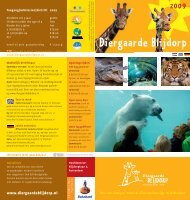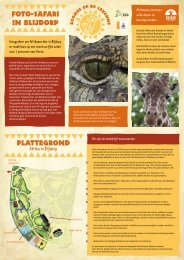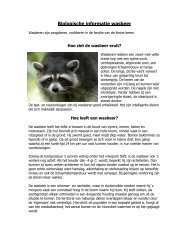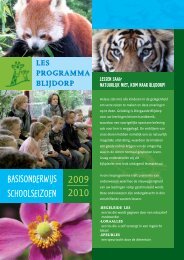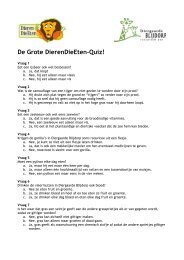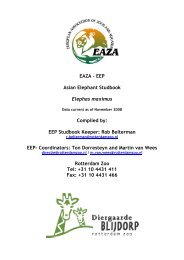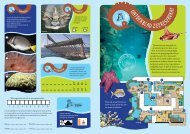You also want an ePaper? Increase the reach of your titles
YUMPU automatically turns print PDFs into web optimized ePapers that Google loves.
<strong>EEP</strong> STUDBOOK CROWNED PIGEONS<br />
Discussion about the results<br />
This comparison gives only a rough indication about the differences about nutrition in the<br />
wild and in captivity. First of all a lot of data submitted by the European institutions, were<br />
incomplete, and some data could not be used. The data of the five institutions used, have not<br />
been proved with those institutions and it might be possible that there is some bias. For<br />
example, some institutions listed mineral stones and limestones on their list, while others did<br />
not. In some institutions mineral stones are ad libitum available and they could have been<br />
comitted or it might be difficult to calculate the eaten amount of mineral stones. A lot of diets<br />
are not very accurate, because sometimes the amount fed instead of the intake was listed and<br />
in most aviaries there are other birds (and unwanted animals like mice!) as well. Finally, no<br />
questions were asked about seasonal influences in the diet of crowned <strong>pigeon</strong>s. Of course also<br />
in captivity there is variation in diet, caused by prices and availability of products like greens<br />
and fruits.<br />
The data from the crowned <strong>pigeon</strong>s collected in the wild were collected shortly after the<br />
reproductive season. It might be possible that during this period the intake of protein and<br />
calcium is lower, to compensate the higher intake during the reproductive season.<br />
Furthermore, only the crop and stomach contents of four crowned <strong>pigeon</strong>s at only two days<br />
and at two locations could be collected, so it is hardly possible to draw any scientific<br />
conclusion from these data. The samples were collected in the summer of 1997, when it had<br />
not rained for weeks, because of El Niño. Therefore the samples collected in Papua New<br />
Guinea might not represent their “normal” diet. Furthermore the samples were put into<br />
ethanol, immediately after taking them out of the bird (within an hour of being shot), and kept<br />
under these circumstances for about two months before analysing them. It was not possible to<br />
estimate the amount of dry matter within the food, because when removing the ethanol, also<br />
some water, enclosed in the food, was removed.<br />
Conclusion<br />
According to observations from the field researcher of Rotterdam Zoo, and other sources as<br />
well, it is known that they are feeding on seeds as well as on fruits. Most diets in captivity<br />
contain a wide range of fruits, seeds, cereals, vegetables and so on. A bird in its productive<br />
stage has other requirements than a bird, which only needs food for maintenance. A<br />
productive bird has a much higher demand for calcium and magnesium. Although there is<br />
much variation between diets in captivity and all institutions say that their birds are in good<br />
condition, in most cases the breeding results are poor. Deficiencies in the diet of the birds<br />
does not seem to have any visible effect on the birds. From this research project it turned out<br />
that differences in nutrient availability might be a cause for the poor breeding results and<br />
therefore more research into this topic is needed. The most striking difference between the<br />
diet for crowned <strong>pigeon</strong>s in captivity and the wild is the ratio of crude fibre. It should be<br />
considered to supply the crowned <strong>pigeon</strong>s with larger food parts, to stimulate the activities of<br />
their gastro-intestinal tract. If more crude fibre and large mineral stones should be fed to the<br />
birds, their gastro-intestinal tract would be more active, which will reduce stress and will lead<br />
to more natural behaviour. Furthermore the amount of protein, calcium and phosphorus is<br />
higher in captivity than in the wild and this can be a reason for the relatively high egg<br />
production in captivity. Of course there are more factors which can have an influence on the<br />
breeding results like zootechnic factors and stress.<br />
92



